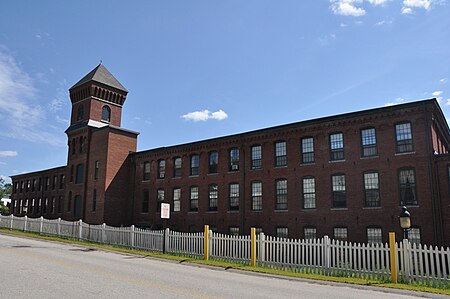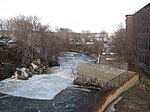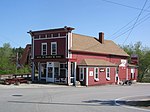Pembroke Mill
Buildings and structures in Merrimack County, New HampshireCommercial buildings completed in 1860Industrial buildings and structures on the National Register of Historic Places in New HampshireNational Register of Historic Places in Merrimack County, New HampshirePembroke, New Hampshire ... and 1 more
Renaissance Revival architecture in New Hampshire

The Pembroke Mill, now the Emerson Mills Condominiums, is a historic mill building at 100 Main Street in the village of Suncook in the town of Pembroke, New Hampshire, on the north bank of the Suncook River. Built in 1860, it is an early example of Renaissance Revival mill architecture, and was a major force in the growth of Suncook as an economic center. The mill building, now converted to residences, was listed on the National Register of Historic Places in 1985.
Excerpt from the Wikipedia article Pembroke Mill (License: CC BY-SA 3.0, Authors, Images).Pembroke Mill
Canal Street,
Geographical coordinates (GPS) Address Nearby Places Show on map
Geographical coordinates (GPS)
| Latitude | Longitude |
|---|---|
| N 43.130277777778 ° | E -71.455 ° |
Address
Canal Street
Canal Street
03275
New Hampshire, United States
Open on Google Maps










